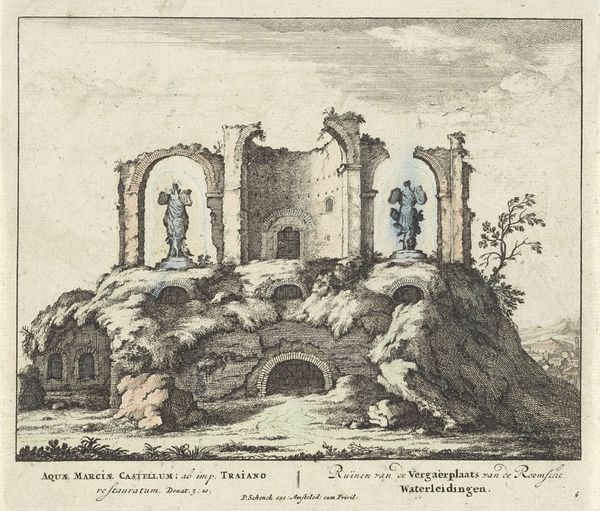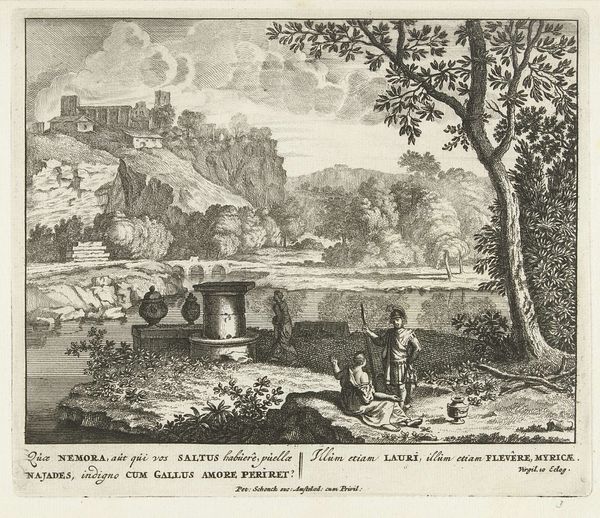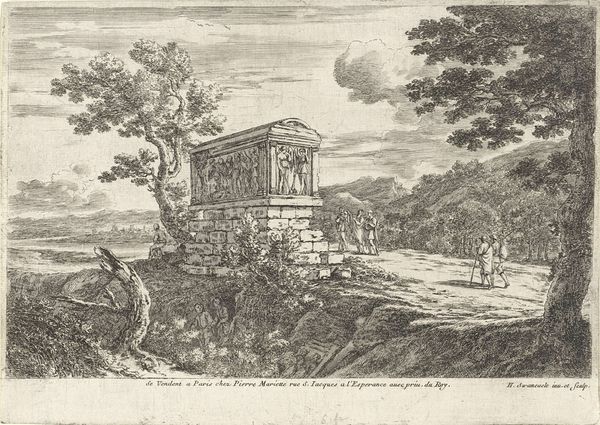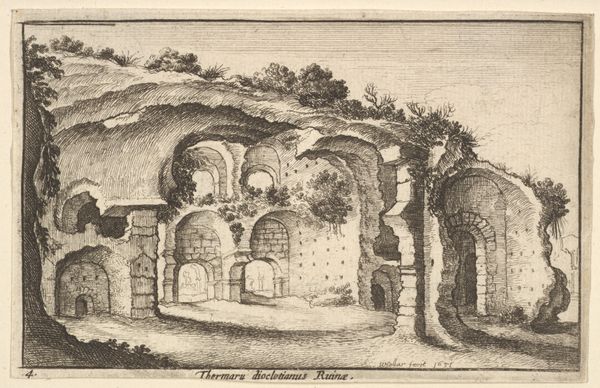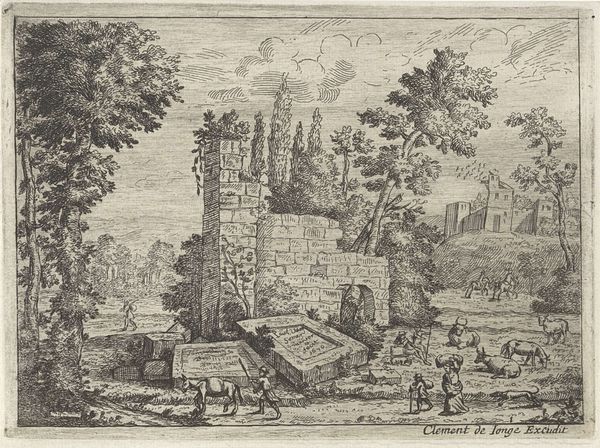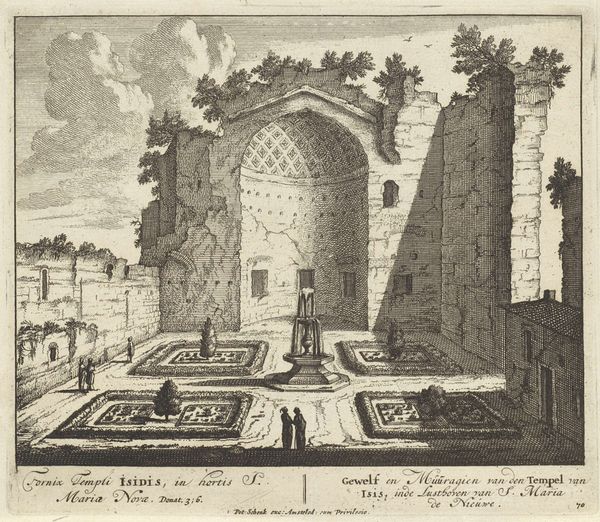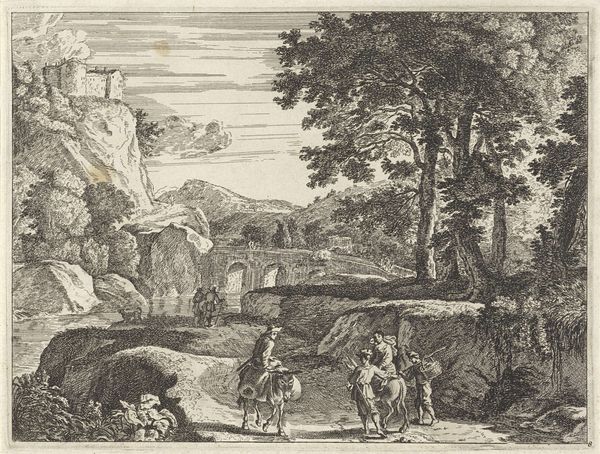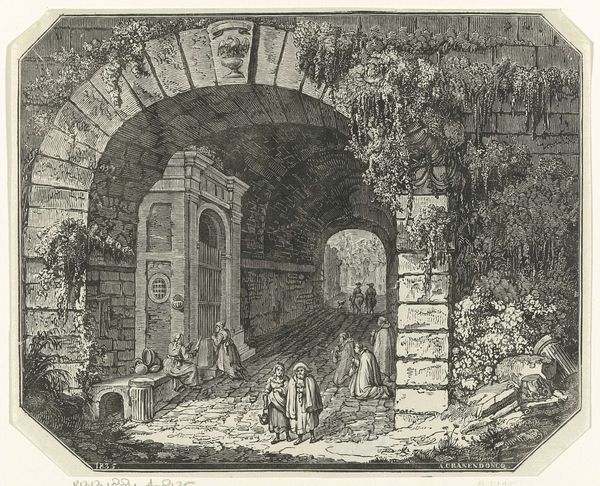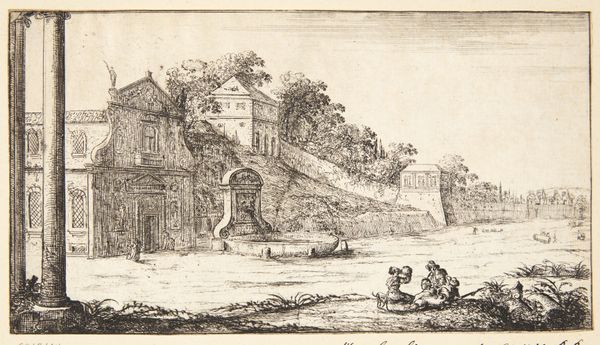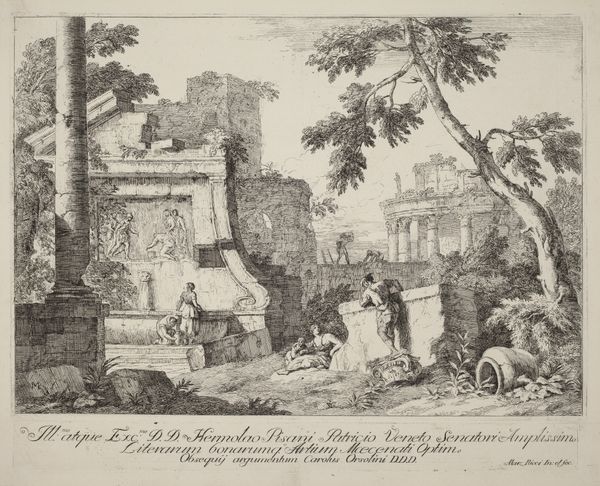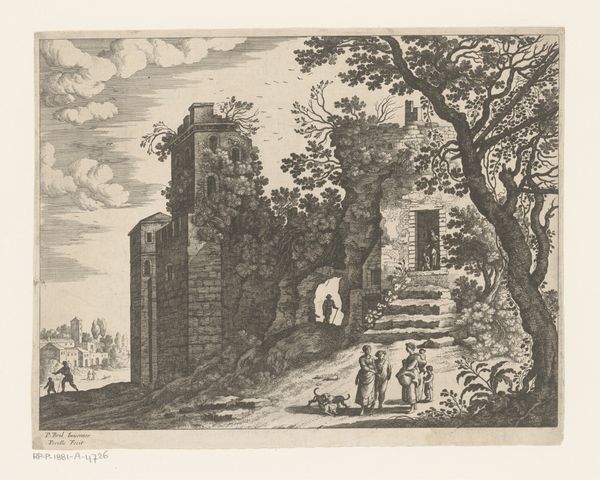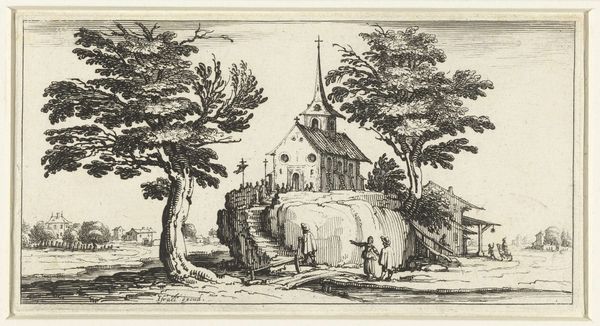
drawing, print, etching, paper
drawing
baroque
etching
landscape
paper
Dimensions: 165 × 189 mm
Copyright: Public Domain
Editor: This etching by Johann Alexander Thiele, titled "The Beautiful Fountain Near Schönburg" from 1743, depicts a stone fountain with figures drawing water. It's interesting to observe the texture achieved through the etching process. What strikes me is the relationship between the monumentality of the stone structure and the everyday activity around it. How do you interpret this work? Curator: Well, considering Thiele's time, a materialist reading suggests focusing on the social and economic underpinnings of the artwork's production and reception. This etching, made with acid and copper plates, exists as both a functional object - a print, used to disseminate images widely - and an aesthetic one. Notice how the inscription locates the fountain "near Schönburg"; this situates the artwork within a specific geographic and social landscape. What kind of labor, do you think, went into the creation and circulation of such prints, and how would they have been consumed? Editor: That's fascinating. I hadn't considered the print as a functional object with its own life beyond the image itself. So, it's not just about what is represented (the fountain and the figures), but also the production process – the labour involved, the accessibility of prints, and their distribution that adds layers to its interpretation? Curator: Precisely. Think about the availability of the materials - the copper, the paper, the acid. And who was likely to buy such prints? Were they intended for local consumption or broader circulation? Exploring these factors allows us to situate this idyllic landscape within the broader material and social context of 18th-century Europe. The labor and resources needed for even this simple landscape challenge the romantic notion of the solitary artist creating in isolation. Editor: I see now. Viewing art through the lens of material and production makes the whole scene much more grounded, less idealized. Thank you! Curator: Absolutely. It invites us to think critically about not just the art itself but the entire system that supports and surrounds its making.
Comments
No comments
Be the first to comment and join the conversation on the ultimate creative platform.
